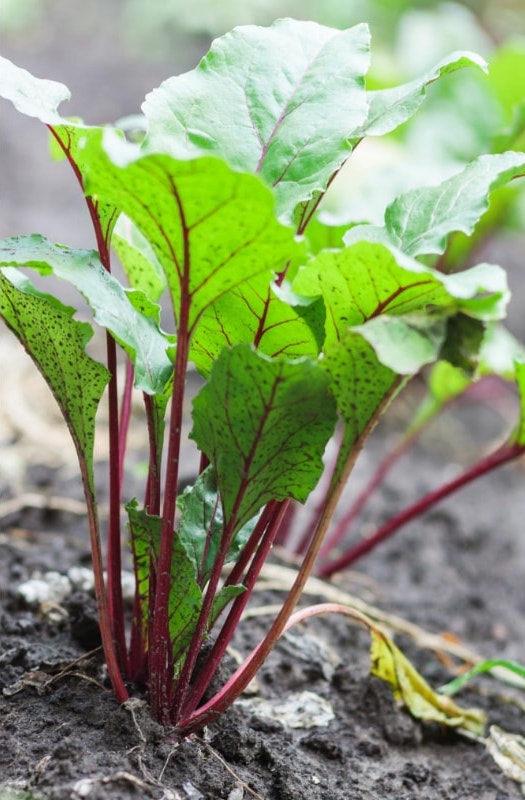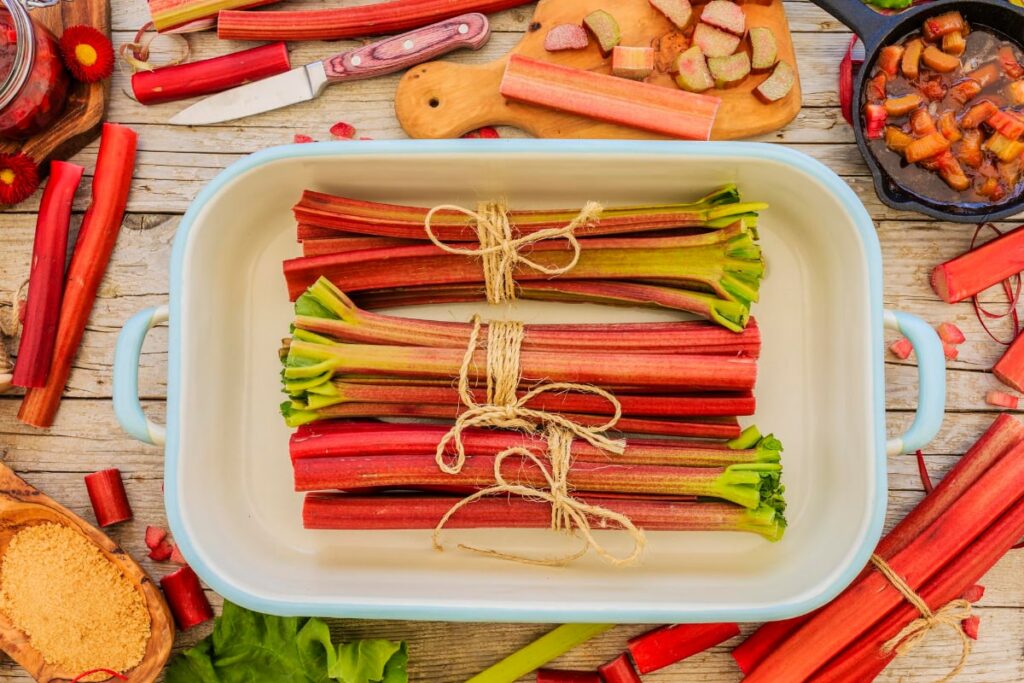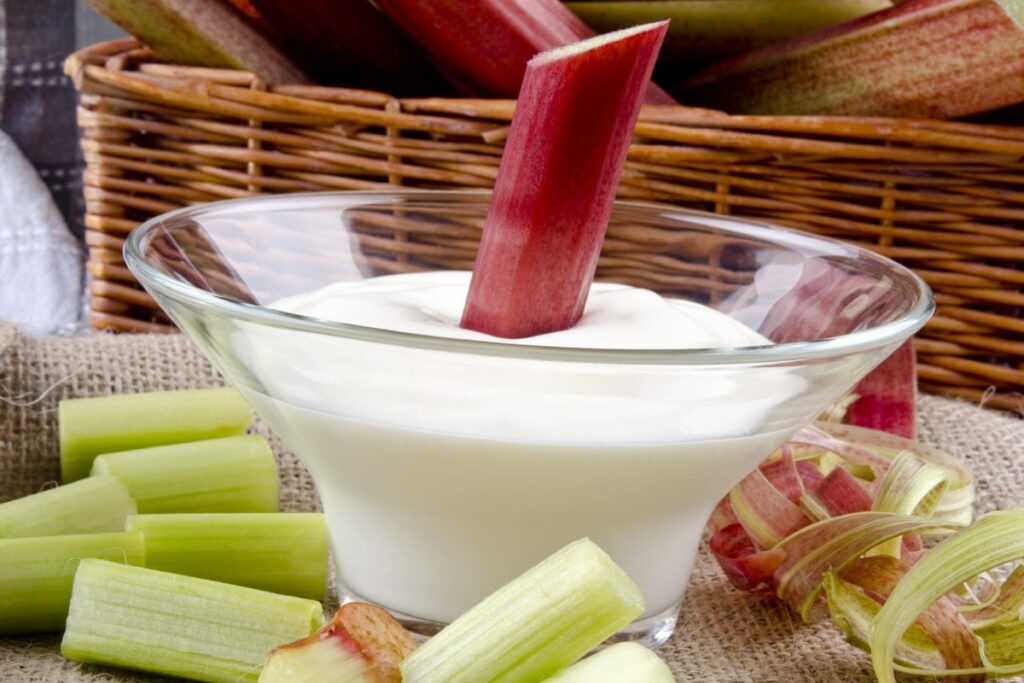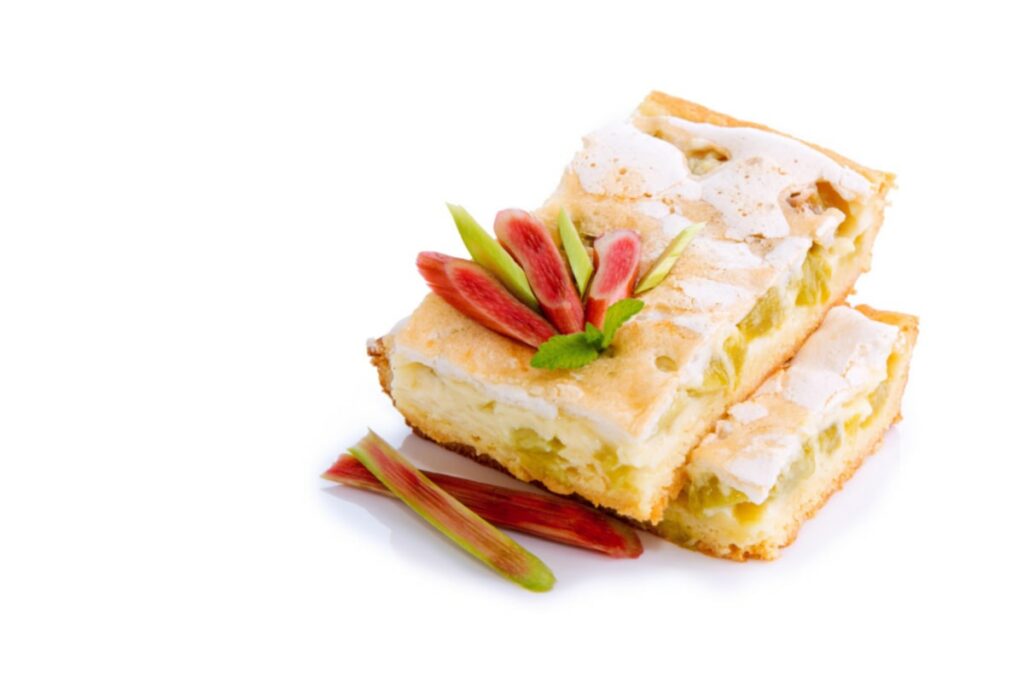Rhubarb is often confused with other fruits and vegetables. So is rhubarb a fruit or vegetable?
The rhubarb plant has long been cultivated for its edible stalks. In fact, it was originally known as “rheum rhabarbarum”, meaning “root of the sea”. Today, it’s commonly grown as a root crop.
If you ask people if an edible part of a plant is a fruit or a vegetable, they will answer on the basis of culinary use. It will not be due to a botanical classification. Rhubarb is one such case.

Is Rhubarb a Fruit or a Vegetable?
Rhubarb is a vegetable. Botany classifies rhubarb as a vegetable. These plants belong to the Rheum genus that belongs to the Polygonaceae family. The edible part of rhubarb is its stalks, thus making it a vegetable.
The leaves are not edible though. They contain high levels of oxalic acid (oxalate), making them toxic. Oxalic acid is present in various vegetables, but not as high or toxic concentrations as in rhubarb.
Even though rhubarb is technically a fruit, some people also consider it a fruit because of its culinary uses. Rhubarb is most often used as an ingredient in jams, pies, or coulis.
Interesting fact, in 1947 rhubarb plants were ruled to be fruit by a New York Court. The ruling was used by rhubarb importers to save taxes.
Rhubarb Health Benefits
Rhubarb is native to China and is known to have been traded as early as the 16th century. It was used primarily as a medicine or in ointments.
Rhubarb is an excellent source of several vitamins and contains lots of antioxidants. Here are some of the benefits you can reap by adding it to your diet.
1. Rhubarb Improves Bone Health
Vitamin K is vital for bone formation. It aids in bone health and strength and may aid in the prevention of osteoporosis. A 3.5-oz. serving with some added sugar contains 26% of vitamin K1’s daily value.
2. Rhubarb Lowers Cholesterol and Protects the Heart
Rhubarb contains a lot of fiber and can affect cholesterol levels. Research shows that it works to lower both total cholesterol and bad cholesterol levels.
Lower cholesterol reduces the risk of heart attacks and of developing cardiovascular disease. The many antioxidants are anti-inflammatory, further protecting the heart muscle.
3. Rhubarb Aids Digestion
Rhubarb contains a good amount of fiber. Fiber maintains bowel movements and health, and prevents constipation. Eating more dietary fiber can lower the risk of disease. Diverticular disease, hemorrhoids, and colon cancer are diseases that fiber consumption impacts.
4. Rhubarb Helps in Preventing Cancer
Rhubarb’s antioxidants fight free radical damage to cells. These properties can reduce the risk of developing certain types of cancer. The anthocyanins account for rhubarb’s ruby red color. They are not only anti-inflammatory and antibacterial, but also contain anti-cancer properties.

How to Consume or Use Rhubarb
There are several varieties of rhubarb available. Those most commonly found in grocery stores are known as garden or culinary rhubarb. If you want to add rhubarb to your diet, you can steam it or use a few other options to integrate it into your meals.
How Should I Cook Rhubarb?
Cooking rhubarb is easy. Simply cut off the leaves and stems, then slice the stalks into 1/4 inch thick pieces. Place them in boiling water until they turn bright pink, about 5 minutes. Drain well before using.
If you prefer to sauté them, you can do that too. Use stainless steel, aluminum, cast-iron, or coated ceramic pans to cook acidic foods. Other kinds of pans can leak chemicals into your rhubarb.
Rhubarb is also often used in sweets to make a strawberry rhubarb pie. Integrate rhubarb into a breakfast smoothie, donuts, cakes, puddings, or ice cream. You can even eat it plain with a little sugar sprinkled on top.
Rhubarb can be included in savory dishes like stir-fries, soup, or stew, or it can be sautéed. It can also be oven-roasted and served with maple syrup, honey, or agave syrup. It is particularly good when used in tomato sauces.

What Does Rhubarb Taste Like?
Raw rhubarb can best be described as tart. For this reason, most people will cook it to use as a fruit and add sugar for taste.
However, if you have never tried raw rhubarb, give it a try. It has a milder flavor than cooked rhubarb.You can find fresh rhubarb at farmers markets during springtime.
Must Rhubarb Be Refrigerated?
You can extend rhubarb’s life through refrigeration. If you leave it at room temperature it will only last a day or two. By wrapping rhubarb and putting it in the refrigerator, it can last as long as two weeks. To extend its life even further, wrap your rhubarb in aluminum foil, but do not crimp and close the ends.
Can I Freeze Rhubarb?
Yes, it is easily frozen. Cut stalks into pieces and place them on a sheet in the freezer until they turn solid. Place them in an airtight container or bag and remove as needed.
How Will I Know If My Rhubarb Has Gone Bad?
Ruby red stalks are characteristic of fresh, healthy rhubarb. If you notice the rhubarb stalks turning brown or black, it has gone bad and will probably smell. You may also see mold developing.

Is Rhubarb a Fruit or Vegetable? Final Thoughts
Rhubarb is technically a vegetable because its stalks are the edible part of the plant. In 1947, a New York judge declared it was a fruit to aid local businesses in paying fewer taxes. Botanists, however, still classify rhubarb as a vegetable.
Remember when using rhubarb, the big green leaves are poisonous due to oxalic acid content. Only eat the rhubarb stalk. Rhubarb is well-known for use in sweets and contains vitamin K1, vitamin A, and calcium.
Learn more about other plants and whether they’re fruit or vegetables:

